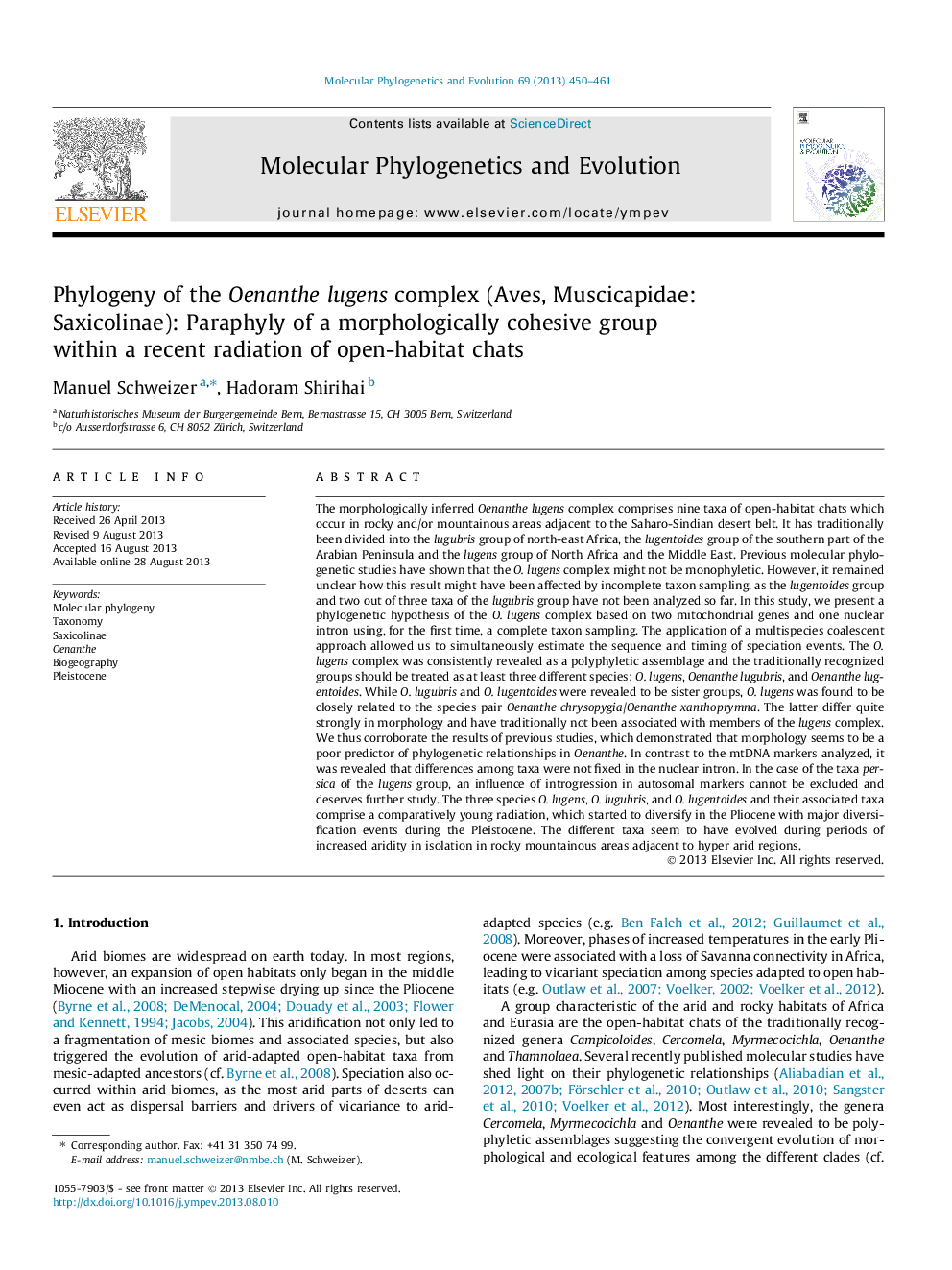| کد مقاله | کد نشریه | سال انتشار | مقاله انگلیسی | نسخه تمام متن |
|---|---|---|---|---|
| 5919628 | 1164270 | 2013 | 12 صفحه PDF | دانلود رایگان |

- First molecular phylogeny of the Oenanthe lugens complex with complete taxon sampling.
- O. lugens complex was consistently revealed as a polyphyletic assemblage.
- Groups within O. lugens complex should be treated as at least three different species.
- The three species and their associated taxa comprise a comparatively young radiation.
- Repeated periods of aridity from the Pliocene onwards shaped current diversity.
The morphologically inferred Oenanthe lugens complex comprises nine taxa of open-habitat chats which occur in rocky and/or mountainous areas adjacent to the Saharo-Sindian desert belt. It has traditionally been divided into the lugubris group of north-east Africa, the lugentoides group of the southern part of the Arabian Peninsula and the lugens group of North Africa and the Middle East. Previous molecular phylogenetic studies have shown that the O. lugens complex might not be monophyletic. However, it remained unclear how this result might have been affected by incomplete taxon sampling, as the lugentoides group and two out of three taxa of the lugubris group have not been analyzed so far. In this study, we present a phylogenetic hypothesis of the O. lugens complex based on two mitochondrial genes and one nuclear intron using, for the first time, a complete taxon sampling. The application of a multispecies coalescent approach allowed us to simultaneously estimate the sequence and timing of speciation events. The O. lugens complex was consistently revealed as a polyphyletic assemblage and the traditionally recognized groups should be treated as at least three different species: O. lugens, Oenanthe lugubris, and Oenanthe lugentoides. While O. lugubris and O. lugentoides were revealed to be sister groups, O. lugens was found to be closely related to the species pair Oenanthe chrysopygia/Oenanthe xanthoprymna. The latter differ quite strongly in morphology and have traditionally not been associated with members of the lugens complex. We thus corroborate the results of previous studies, which demonstrated that morphology seems to be a poor predictor of phylogenetic relationships in Oenanthe. In contrast to the mtDNA markers analyzed, it was revealed that differences among taxa were not fixed in the nuclear intron. In the case of the taxa persica of the lugens group, an influence of introgression in autosomal markers cannot be excluded and deserves further study. The three species O. lugens, O. lugubris, and O. lugentoides and their associated taxa comprise a comparatively young radiation, which started to diversify in the Pliocene with major diversification events during the Pleistocene. The different taxa seem to have evolved during periods of increased aridity in isolation in rocky mountainous areas adjacent to hyper arid regions.
Journal: Molecular Phylogenetics and Evolution - Volume 69, Issue 3, December 2013, Pages 450-461